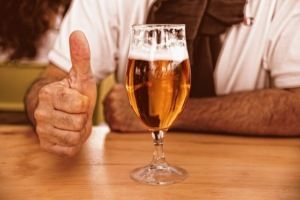News
Danish researchers crack non-alcoholic beer code
This article is more than 3 years old.
Scientists at the University of Copenhagen have developed a method that could revolutionise non-alcoholic beer production

Thumbs up for the beer, but not the company (photo: Pixabay)
It’s long been a titanic struggle for beer drinkers in terms of enjoying non-alcoholic variants.
Monstrosities like O’Douls have terrorised the public for decades.
Granted, there have been marked improvements in recent years, but it’s never really been quite the same as the ‘real thing’.
Well help could be on the way following news that researchers from the University of Copenhagen have developed a way to brew non-alcoholic beer that tastes like … beer.
“What non-alcoholic beer lacks is the aroma from hops. When you remove the alcohol from the beer, for example by heating it up, you also kill the aroma that comes from hops,” said Sotirios Kampranis, one of the professors behind the research.
“Other methods for making alcohol-free beer by minimising fermentation also lead to poor aroma because alcohol is needed for hops to pass on their unique flavour to the beer.”
Kampranis and his colleagues have found a way to produce a group of small molecules (monoterpenoids) that add the hoppy flavour.
They then add it to the beer at the end of the brewing process to give the non-alco beer its flavour back.
“No-one has been able to do this before, so it’s a game-changer for non-alcoholic beer,” said Kampranis.
READ ALSO: Sudsation: Spectacular beer discovery made in Denmark
Ready for October
The new technique also happens to be far more sustainable that existing methods.
Some 2.7 tonnes of water is required to make a single kilo of hops and production also needs transportation and cooling resources.
“With our method, we skip aroma hops altogether and thereby also the water and the transportation. This means that one kilogram of hops aroma can be produced with more than 10,000 times less water and more than 100 times less CO2,” said Kampranis.
The new method is already being tested at a number of breweries in Denmark. The technique is scheduled to be ready for the entire beer industry in October 2022.










































